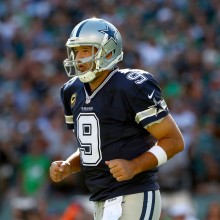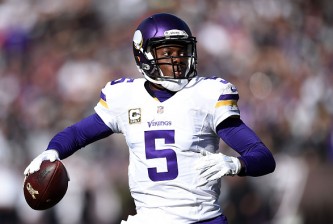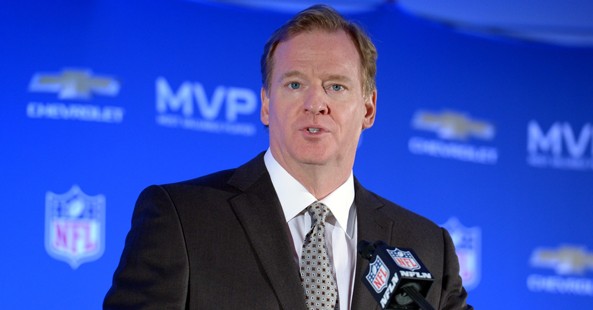
The NFL makes a lot of money, guys. Like, we're talking 11 figures a year. Facebook money. WhatsApp money, but on an annual basis.
And per the collective bargaining agreement, the more money the league makes, the more money the players make. Not controversial or anything. But as a result, the salary cap — and salary floor — is now beginning to rise again at an alarming rate.
It was confirmed Friday that the cap would hit $133 million in 2014, which represents a $10 million jump from last season.
Peter King of TheMMQB.com points out that the cap has doubled since the turn of the century and has nearly quadrupled since 1994. It all makes you wonder if teams are going to start struggling to keep up.
More from King:
NFL teams are going to have to spend the money on somebody, inside or outside the organization. Teams are mandated to spend a combined 95% of the salary cap on players in the 2013 through 2016 seasons; each team must spend, minimum, 89% of the cap money available or face a stiff penalty in 2017.
You can carry money over from year to year right now, but that'll just delay the bill for that 2016 season, at which point ESPN's Adam Schefter reports the annual cap could hit the $150 million mark.
According to Spotrac, the Raiders, Jaguars and Browns are all currently more than $55 million below the cap. That means that to keep pace with the salary floor they'll all have to spend at least $40 million between now and the end of the year. And then it'll be a whole new ballgame again next spring.
Is that reasonable? I mean, aren't teams generally shying away from the free-agent market nowadays? Of course, this could merely force them to keep and reward more of their own impending free agents, as the Philadelphia Eagles have done in splashy form thus far this offseason, but even then it's almost hard to spend that much cash.
I'm not saying the players don't deserve their piece of the pie. I've always defended what pro athletes make because it's supply and demand, but maybe we've hit a point at which those principles can't fully justify what's taking place. Teams are going to have to start handing out bloated contracts to 2014 and 2015 free agents, which won't exactly be fair to those who signed long-term back in, say, 2012.
The other problem is that there's a disparity between big money-makers like the Cowboys and teams like Jacksonville, Oakland and Buffalo. Dallas makes half a billion dollars in annual revenue, according to Forbes, while those three franchises make about half of that.
Revenue sharing is the only reason why those numbers are as close as they are (half a billion vs. a quarter of a billion), but at some point it becomes unfair to ask the teams at the bottom of that totem pole to hit 89 percent of such an exploding annual number.
Unfortunately for those teams — and fortunately for their players — nothing will change soon. The CBA was renegotiated in 2011 and doesn't expire until 2022.
So we're stuck with this model, regardless of how wonky things become.
That's unless Sean Gilbert swoops in on behalf of the players and finds a way to get the players out of the current CBA, which would seem like a strange goal considering the circumstances. After all, I can't see the players benefiting much more than they're about to.























